19+ Sample School Development Plan Templates
-
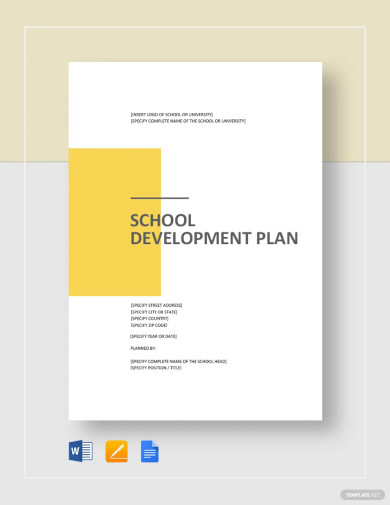
School Development Plan Template
download now -

School Sports Development Plan Template
download now -
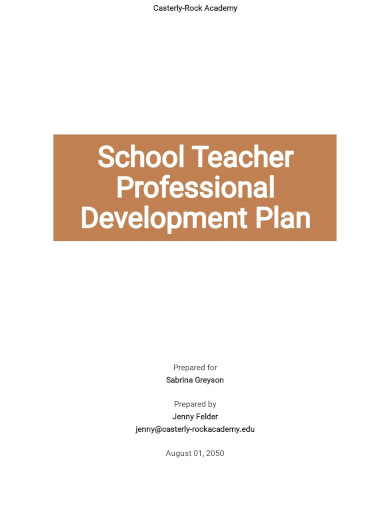
School Professional Development Plan Template
download now -

Free School Leadership Development Plan Template
download now -

General School Development Plan Template
download now -
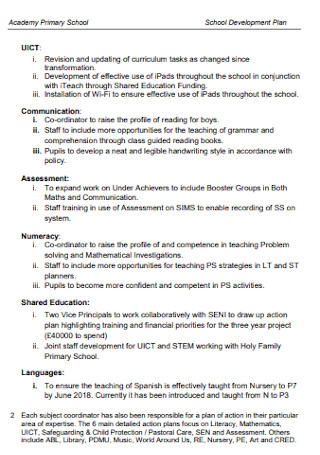
Primary School Development Plan
download now -
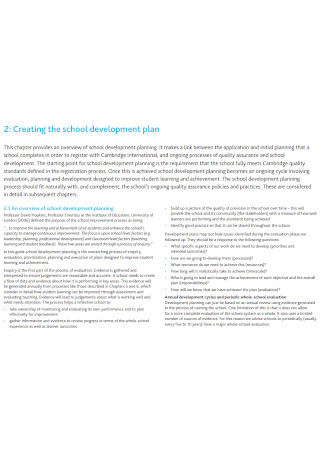
School Development Planning
download now -

School Academy Development Action plan
download now -
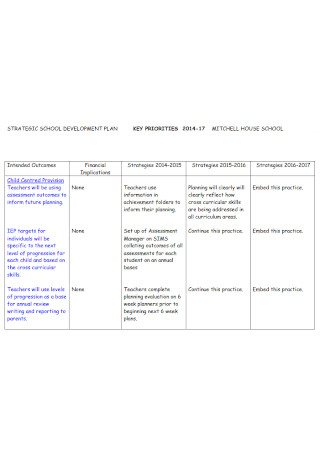
Strategic Evaluation School Development Plan
download now -

Sample School Display Development Plan
download now -

School Leadership Process Development Plan
download now -

5 Year Elementary School Development Plan
download now -

School Mission Curriculum Development Plan
download now -

Importance of School Development Plan
download now -

Middle School Development Plan
download now -
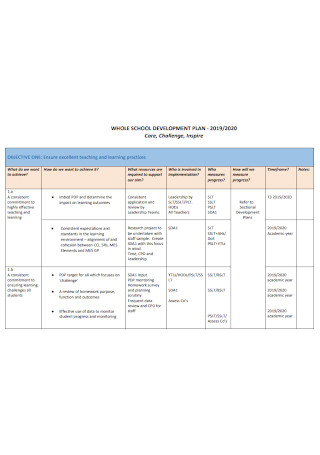
Nursery School Development Plan
download now -

Learning School Development Plan
download now -
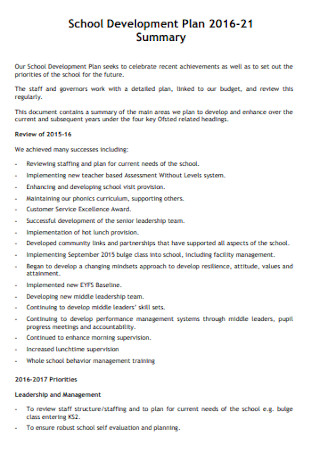
Academic School Development Plan
download now -
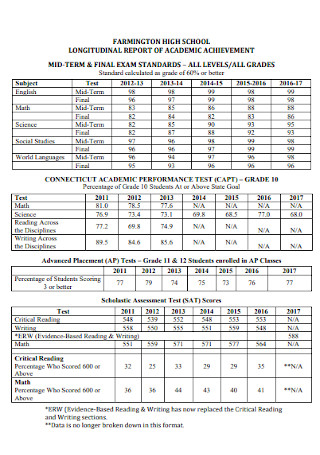
High School Development Report Plan
download now -
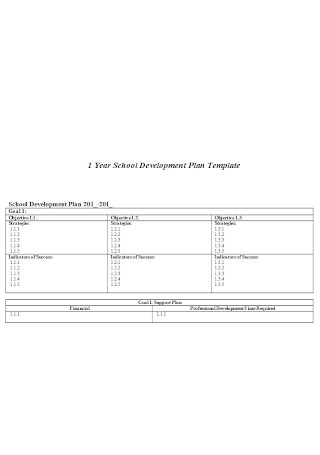
One Year School Development Budget Plan
download now
FREE School Development Plan s to Download
19+ Sample School Development Plan Templates
What Is a School Development Plan?
What Does the School Development Plan Involve?
The Key Players of a School Development Plan
How to Process an Effective School Development Plan
FAQs
What is the difference between SDP and SIP?
What does a school development plan promote?
What can a teacher contribute to students and SDP?
What Is a School Development Plan?
In simple terms, the school development plan is a strategic plan aiming for improvement. But the planning process is more complex than its definition. The said plan is a comprehensive working document which schools use to analyze and assess academic performance, trends, school impact, and other improvement targets in a particular cycle. And the challenge in enhancing the quality, performance, and other factors in school is that there are changes and effects to manage. Hence, there are trials and errors to fix as well until the desired outcome will be met, all with the help of effective management.
According to Education Authority (Northern England), the SDP should be prepared and revised periodically in accordance with the 1998 Education Order on the Boards of Governors.
Meanwhile, it is said that Ireland’s second-level education system underwent an increasing number of cultural, curricular, and structural changes ever since the Free Education’s introduction in 1967.
What Is the Purpose of a School Development Plan?
The most common knowledge on why SDP is important is to promote continuous improvements for the school. Without innovation and development, a school might fail to compete with other leading schools. And every year, there are new challenges to face in school not only by the staff but also its students. Hence, development should be given some attention for a better educational system. In fact, a school development plan’s purpose is to ensure that schools are well-prepared for high-quality teaching or learning, teacher empowerment, and effective management for change.
Furthermore, many schools are encouraged to innovate and consider school development planning. An example is how SDP should be prepared or revised periodically to follow the 1998 Education Order on the Boards of Governors. Thus, it is a rule in some areas. And you cannot underestimate SDP’s effects like how it all went down in Ireland’s second-level education system. Based on a report, the said education system experienced an increasing number of cultural, curricular, and structural changes since the Free Education’s introduction way back in 1967.
What Does the School Development Plan Involve?
Indeed, SDP is extremely crucial in many forms may it be for planning, analysis plan, or evaluation purposes. But what exactly is inside that plan in the first place? A bunch of elements can be found inside it. And a standard school development plan would consist of the following:
The Key Players of a School Development Plan
The school development also has some major key players to make the plan happen. Although not every player is an actual person, they are still crucial to help you succeed. Without further ado, here are the four major players of the SDP:
Analysis
Always add analysis to your checklist in making SDP happen because it is one of the essential tools to make a development plan smoothly. You analyze what previous achievements were done by the school, what the current challenges the school is facing, and many more areas of concern.
Base Plan
A base plan is another significant ingredient for SDP since it guides you from what to do down to the final action plan. The same goes for the list of steps on what to take until all your goals will be fulfilled in the end. And since the base plan is more of the SDP’s foundation, be sure it is already solid and impressive enough in the first place.
Takeaways
All the learnings, takeaways, or purposes of the plan must be highlighted. This part is critical as a reminder for everyone who took part in the plan about why you need to follow the plan. So what can everyone learn from the overall plan? And how will they actually improve education or the school in general? Explain such takeaways so no one loses track of the conclusion desired.
Staff
Of course, plans do not work without the staff. Not only one person will craft the plan because you can gather lots of opinions from different staff members. They might have intriguing ideas on how to make a better school. Or perhaps, they know of ways to help both teachers and students enjoy the school in general.
How to Process an Effective School Development Plan
You already know about the school development plan’s definition, purpose, elements, and so much more. But how about creating the SDP itself? You can surely process it well in just five easy steps. Kindly observe the following:
Step 1: Re-evaluate the School’s Goals and Aims
Before you focus on what you intend to accomplish, how sure are you that your plan is relevant to your school’s vision, goals, and aims? To answer that question, begin re-evaluating your school’s goals first. That way, you would have a clear introductory statement regarding what plan should not be contrary to the school’s aims. List every goal and objective clearly until you would know how to start the plan. And if you are positive that the goals help fulfill the educational institution, then go for it.
Step 2: Audit the School’s Current Provisions and Areas of Concern
Check the school’s current provisions, resources, and areas that need improvement. Those are necessary to report until it will be easier what improvement plans must be implemented for the school. A thorough audit shall definitely make a difference. By auditing, you can assess your needs quickly on how to develop education or the school. Suppose your area of concern is because of having a tight sample budget. That also signifies that planning for the budget itself is needed for the SDP.
Step 3: Identify the Appropriate Steps and Actions for Development
Everything you recorded will slowly lead to making an action plan. But before that, you should create a draft on what appropriate steps must be taken to be specific on how the sequence of each action goes. All steps must lead to fulfilling the goals or objectives involved. So whether you need to improve the school’s teaching and learning quality, campus resources, staff leadership, or any other concern, recognize the best steps to develop them.
Step 4: Insert Your Plans in a Template
Once you have finalized your plans, transfer the content to a school development plan template of your choice. Have you seen all our sample templates above already? You have plenty of options to choose from. And the best part is you can always change the format, design, and entire content. Also, all professional templates are premade, meaning you no longer begin from scratch in making the document. But while transferring plans from a draft to a template, be sure you organize the details too. That way, the final display must be well-organized, readable, and detailed.
Step 5: Finalize the Arrangement for Evaluation and Monitoring
After everything you have learned from what SDP is involved with and its key players, be sure they are found in the document. The next step is to evaluate everything. During the assessment, review if the spelling is correct, no area of concern has been ignored, and that everything is just right and complete. And finally, arrange how the monitoring process goes. You already know that tracking the progress of the plan is part of the scheme. So ensure that there is always progress until you complete the structured plan.
FAQs
What is the difference between SDP and SIP?
SIP refers to school improvement planning, which is sometimes confused with the school development plan. And the difference between the two is that SIP tells us that every school should follow a uniform code. But with SDP, the entire plan is school-based, meaning it is unnecessary for all schools to follow the same code.
What does a school development plan promote?
Expect a bunch of factors regarding what SDP promotes. And the most notable examples are the following:
- School improvement
- School effectiveness
- Quality development
- Staff improvement
- Partnership
- Effective deployment of resources
- Furtherance of goals and priorities
What can a teacher contribute to students and SDP?
The teachers help the pupils take control of how they learn and recommend a smarter way to think. Also, teachers observe numerous strategies that could boost student participation until every student becomes more responsible to learn. And with the SDP, teachers may help some students who need support.
A school development plan is not just a long authorization of demands. It is a collaborating activity where the teachers, students, parents, staff, and other stakeholders can contemplate and reinvent whatever works better for the school. So even when some steps and processes can be overwhelming, the Herculean effort surely pays off when you reach your desired conclusion. And with the help of our sample school development plan templates, planning has never been made easier. Plan and improve now!
